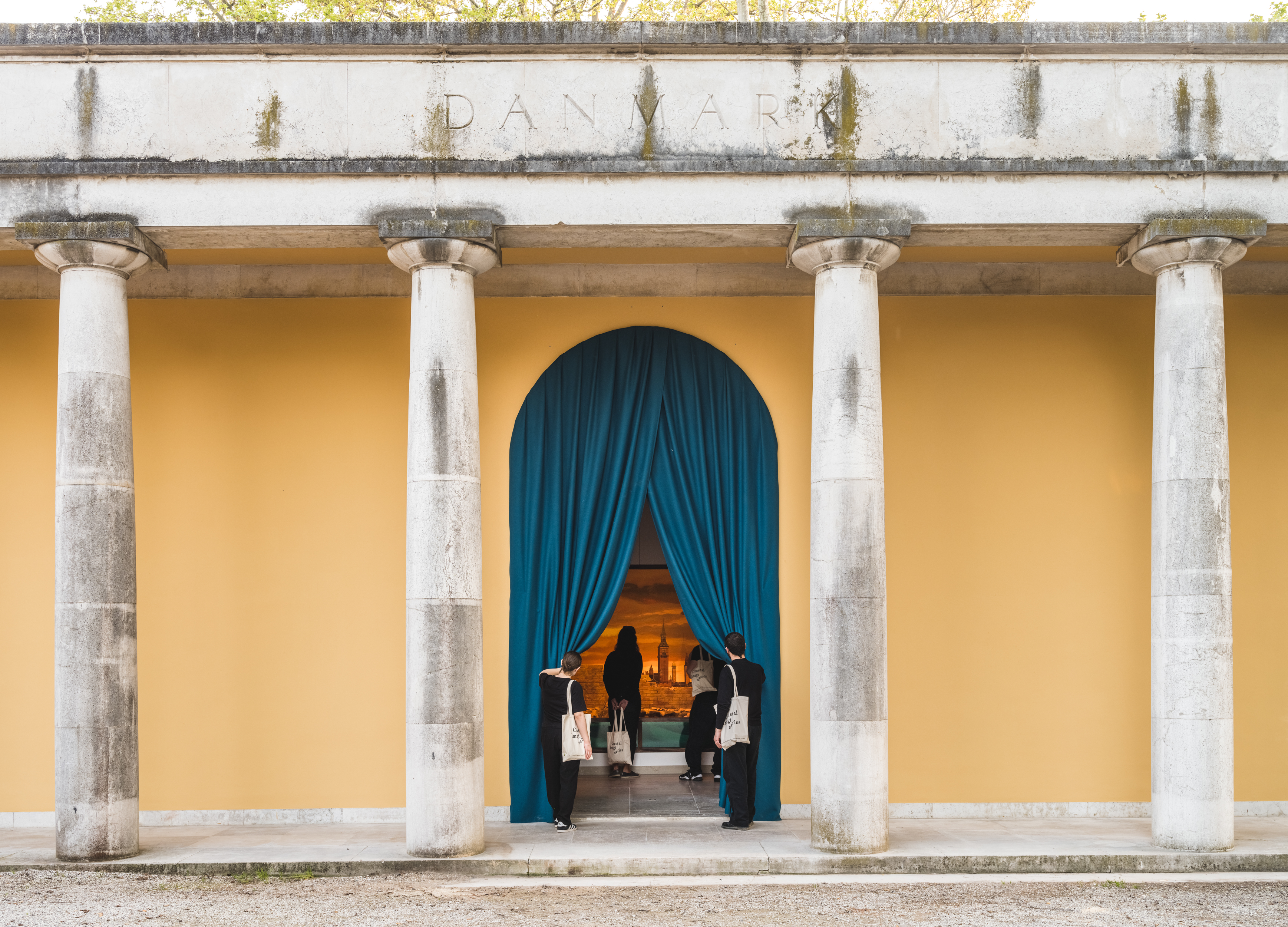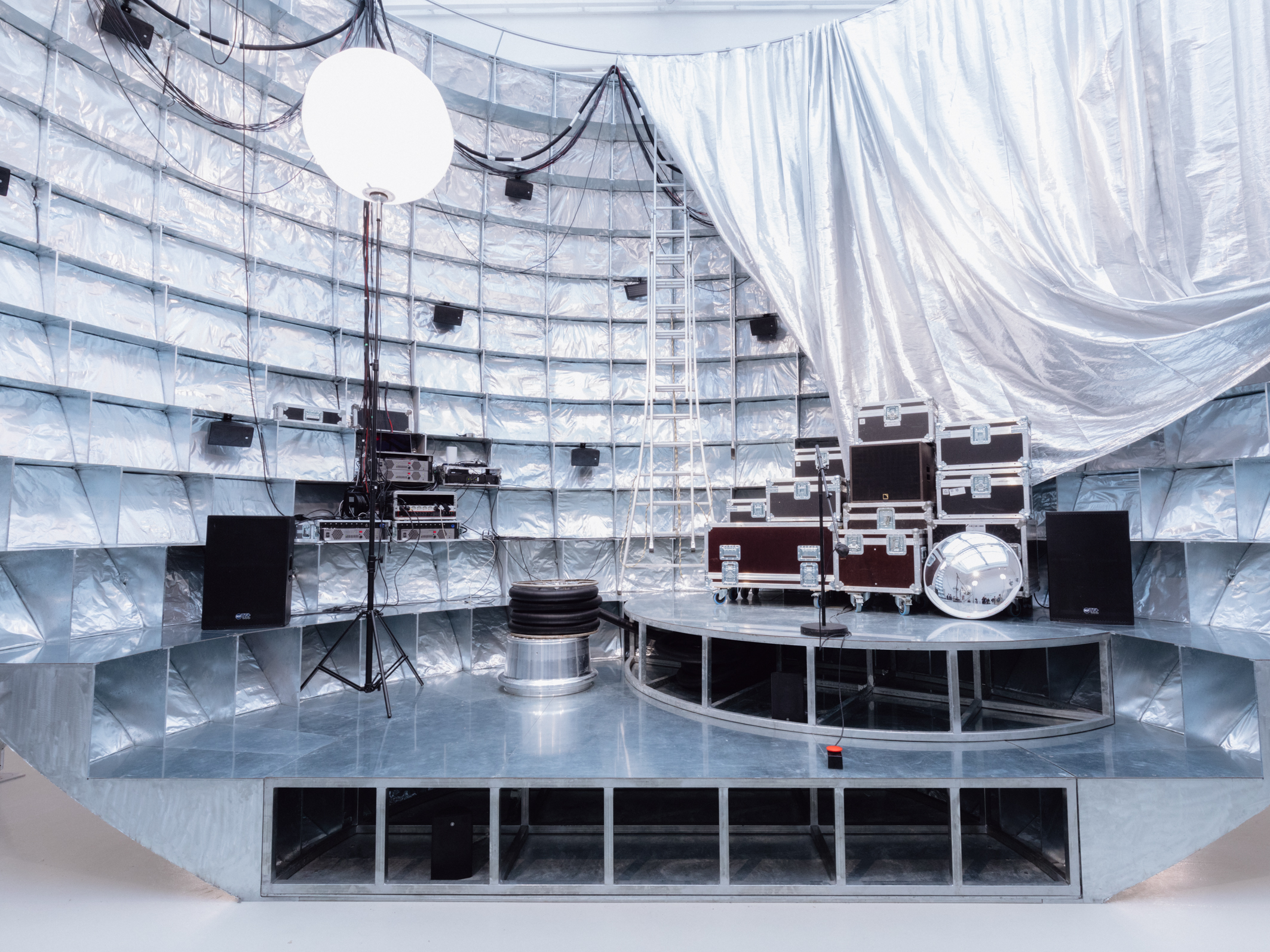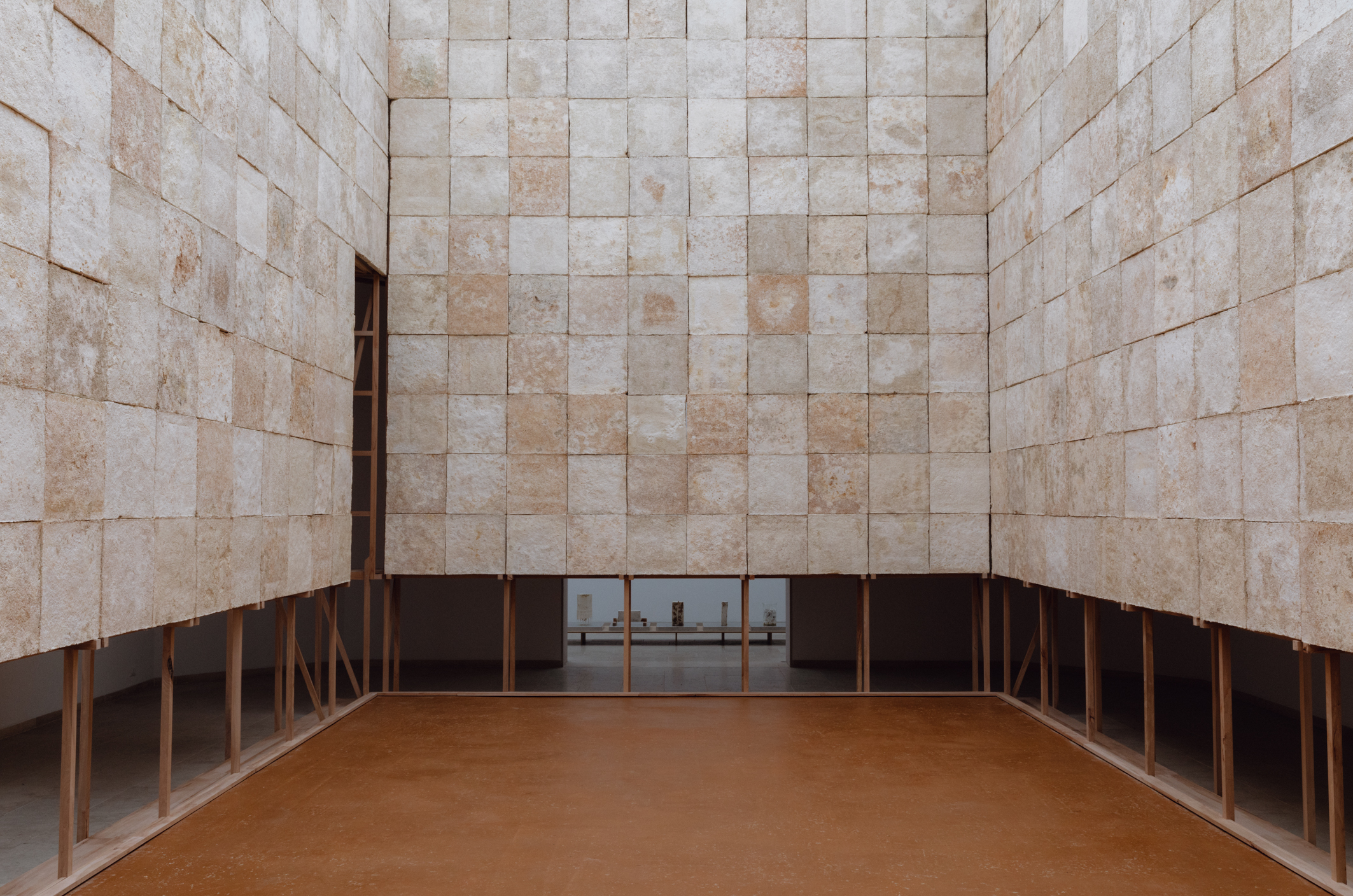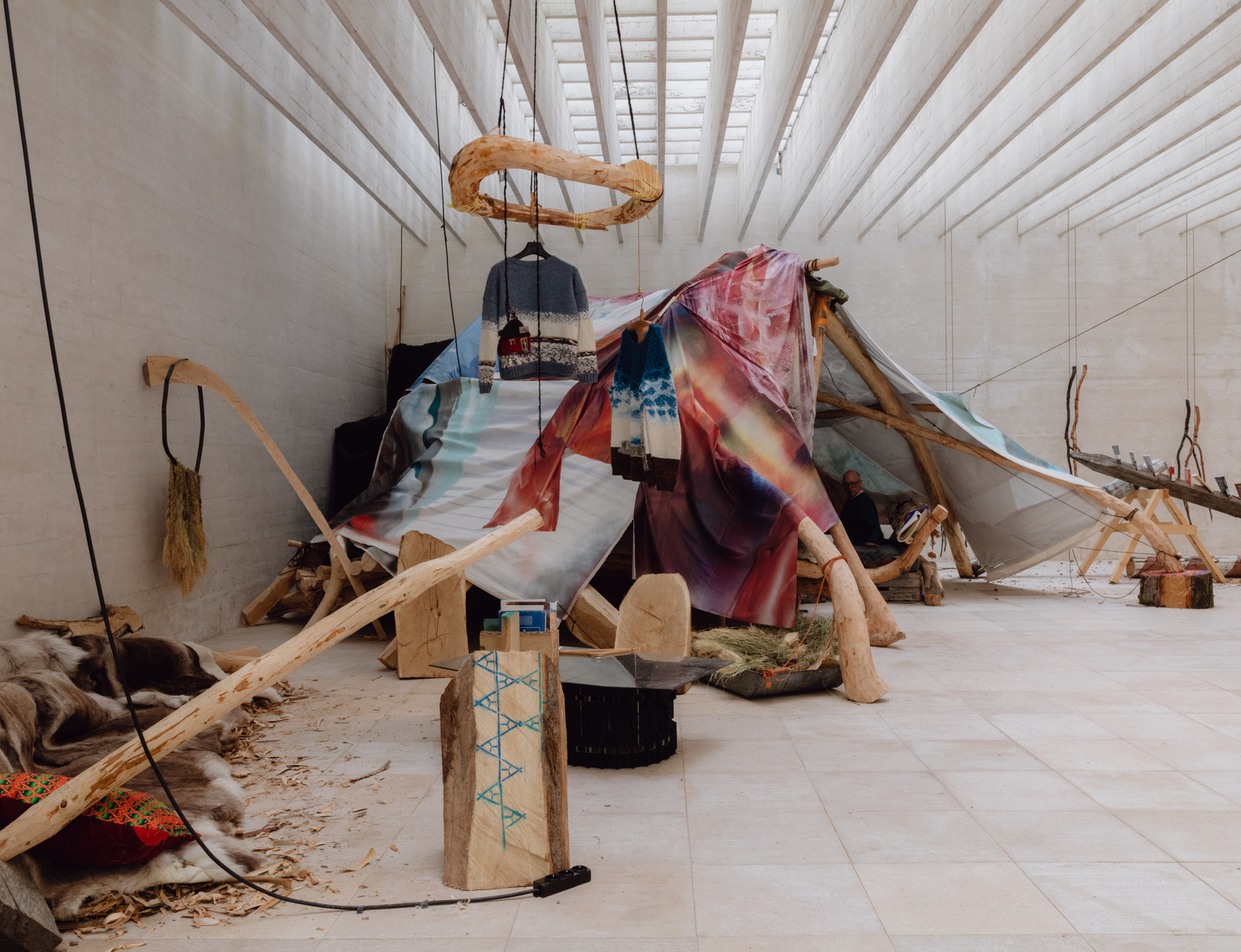Reflection on the The International Architecture Exhibition – La Biennale di Venezia:
The Danish Pavilion and selected pavilions.
By Bente Scavenius
As long as there's life, there's hope – at least according to an old saying. At this year's Architecture Biennale, there's a lot of life, but not so much hope. There's plenty of activity and many ambitions, but the future prospects sometimes seem hopelessly depressing. As you walk around the Biennale area, it's not always uplifting to be confronted with the serious issues of climate change, pollution, population growth, national identity, gender identity, migration, poverty, colonization, and wars. Indeed, all the heavy topics that dominate everyday life, and therefore the 18th Biennale Architettura.
From what I've experienced at the Biennale over the years, it seems to have a tradition of reflecting the society and life conditions of its population, which architects must address. I've often thought that the architecture Biennale, more than the art biennale, had a "hands-on" approach to societal developments. While the art biennale used to focus mainly on a theoretical and aesthetic approach to art, the Biennale Architettura took a more realistic and visionary angle when selecting projects presented in the national pavilions. However, nowadays, it's difficult to distinguish between the two biennales, as they have come so close in their visual and aesthetic expressions.
A broader audience
In contrast to the Biennale Architettura, the art biennale has a long history dating back to the mid-1890s and has traditionally always attracted more attention. But the Biennale Architettura has also become such a well-established event that it garners a lot of attention. And for a good reason, as it appears today much better curated and with a professional openness that attracts a broader audience.
As I see it, the Biennale Architettura has a tradition of not only keeping up with contemporary issues but also taking a long-term perspective, offering space for future visions, possibly suggesting improvements. This also applies to this year's biennale, the 18th in succession, which revolves around the theme "The Laboratory of the Future," chosen by the Scottish-Ghanaian architect, writer, and curator Lesley Lokko. It's a broad theme, so the participating nations approach it quite differently.
Focus on Africa
For Lesley Lokko, it has been crucial to focus primarily on Africa as a continent, where she has deep insights. This stems from her upbringing in both Scotland and Ghana, and because she currently heads the African Futures Institute in Accra. However, the theme does not exclude contributions from other continents, bringing their histories, professional challenges, and visions.
There are many good reasons for Lesley Lokko to focus on Africa, especially as it has the world's youngest population and the fastest-growing urbanization. Moreover, many people, both voluntarily and involuntarily, live outside their native culture in Africa, particularly in present-day France, where thousands have migrated from former colonies.
Africa's dominant role in this year's Biennale is intriguing, as the continent faces many, often insurmountable, challenges. Still, other smaller countries from distant continents also have a voice in the Biennale, adding to its diversity. Additionally, Lesley Lokko was keen to ensure that this year's participants had a relatively low average age and an equal gender distribution. Thus, it's an ambitious Biennale, addressing major and essential themes that many discuss, but few act upon.
Future laboratory
Having seen this year's Biennale Architettura and visited the pavilions of various countries, there are many questions about the global future, and there's ample reason for concern. Therefore, both short-term and long-term actions are required to address climate change, population growth, and sustainability demands. And this is precisely what Lesley Lokko aims to achieve with the numerous architectural projects she has gathered, both in Giardini's national pavilions and the former ropemaking buildings at Arsenale.
With her theme "The Laboratory of the Future," Lesley Lokko encourages curators from different national pavilions to reflect on how they can, through architecture, art, and science, chart new courses for the future. Interestingly, from a holistic perspective, she wants to create relations and understanding between the privileged and much less privileged continents. Thus, she envisions the Biennale as a collective workshop that poses questions about the future, even those that might not necessarily have answers.
With these questions about the global future, it's clear that the diversity at this year's Architecture Biennale is vast. Through visionary projects, installations, sculptures, photo art, videos, and performances, this year's Biennale stands out as an essential beacon highlighting what concerns architects, artists, and curators these days.
The Danish Pavilion
A relevant interpretation of Lesley Lokko's proposal is Denmark's national contribution "Coastal Imaginaries," which fills the entire Danish Pavilion. The project, curated by Josefine Micheau, addresses the consequences of rising water levels around Copenhagen. The exhibition is divided into a theoretical section by the design studio Schønherr and a visual part with an hour-long diorama where senses through light and sound are at play. Here, the scenographer Christian Friedländer has staged the Little Mermaid sitting on her rock outside Avedøre, where under dramatic weather conditions she will reunite with her natural element when the water rises.
With the immense amounts of rain that will occasionally pour over Copenhagen, combined with the sea rises, future floods of such severe dimensions will occur that nature can't absorb the water. The exhibition disturbingly portrays how the future coastal landscapes will shape up. This horror scenario is further substantiated by the doomsday atmosphere Christian Friedländer has created in his imaginative science fiction tale about the Little Mermaid's fate.
Contributions from Around the World
Despite the highly topical subject, there was no gold lion for The Danish Pavilion on the opening day. However, it went to Brazil with the exhibition "Terra," addressing the indigenous people who were expelled from their land when Brasilia was established in the middle of nowhere. They were later relocated to what has evolved into pure slum. A well-conveyed and relevant exhibition deserving of its lion.
Many – including myself – had otherwise thought the gold lion would go to The Belgian Pavilion, where inside the building, they have built a very minimalist box clad in natural-colored mycelium plates – a type of fungal growth. The material has a tangible surface that is beautiful in shades and also sound-absorbing. A surprising building material that is visionary in every sense.
Among the many pavilions offering food for thought is the German one, where the building appears under renovation, looking like a storage with endless amounts of construction materials from previous exhibitions, intended for recycling.
The Nordic Pavilion, designed by Sverre Fehn, focuses on the Sami, a current theme that provides room for reflection. The English pavilion's theme "Dancing before the Moon" also deserves a mention, where a group of artists and architects show new ways for communication in a world where people of diverse cultural backgrounds must coexist, dance, and cultivate the earth's crops.
For obvious reasons, The Russian Pavilion is closed. Meanwhile, The United States Pavilion shines with a site-specific installation "Everlasting Plastic" exploring how the ubiquitous plastic can be recycled.
There's not much humor in this year's Biennale; the global challenges seem too substantial. However, there's entertaining content in The French Pavilion, where I experienced a performance with Ball Theater – a hemispherical stage, humorously questioning a future where architecture will frame a population of diverse cultural backgrounds. It was a musical, physical, and funny performance where gender, identity, and cultural diversity were vividly played out.
African Reflections
Finally, I'd like to return to Lesley Lokko's wish to give Africa a voice in this year's Biennale Architettura. It's especially expressed in the part of the Biennale taking place in Arsenale, where both visually and research-wise, there's reflection on "Afrofuturism." A notable feature is the documentary created by Twenty Nine Studio and video artist Sammy Baloji from Congo.
With his insight into Congo's colonial history and the country's cultural, architectural, and industrial heritage, Sammy Baloji has crafted a documentary about a dilapidated agricultural research center that over time has amassed tons of archive material about agricultural conditions from the colonial period until today. Seemingly useless material that essentially contains knowledge of the many valuable resources that could have benefitted Congo's population. A thought-provoking project presented through a well-produced film where Sammy Baloji narrates the historical events shaping today's Congo. Simultaneously, it holds the essence of the story Lesley Lokko focuses on with her "The Laboratory of the Future," aiming to frame architecture in a new and broad context through global dialogue.
The 18th The International Architecture Exhibition – La Biennale di Venezia is open until 26th November 2023.
Bente Scavenius holds a master's in art history, is an art critic, curator, and author. She's also a familiar face from various TV programs about art and has received several awards for her art dissemination.








![Pavilion of BRAZIL Terra [Earth]](/sites/default/files/2023-08/MDM_BR-Brazil-1151.jpg)
![Pavilion of BRAZIL Terra [Earth]](/sites/default/files/2023-08/MDM_BR-Brazil-1148.jpg)